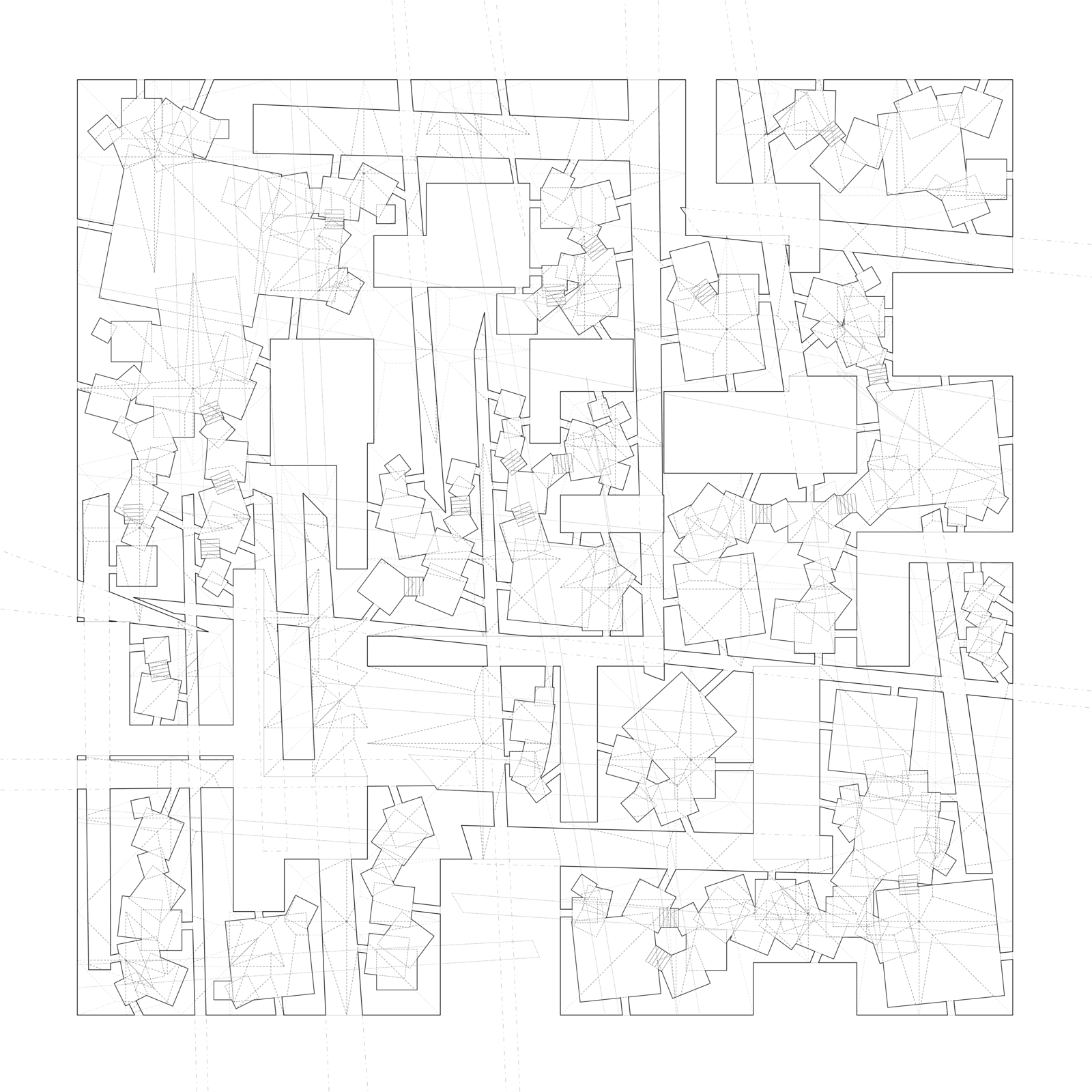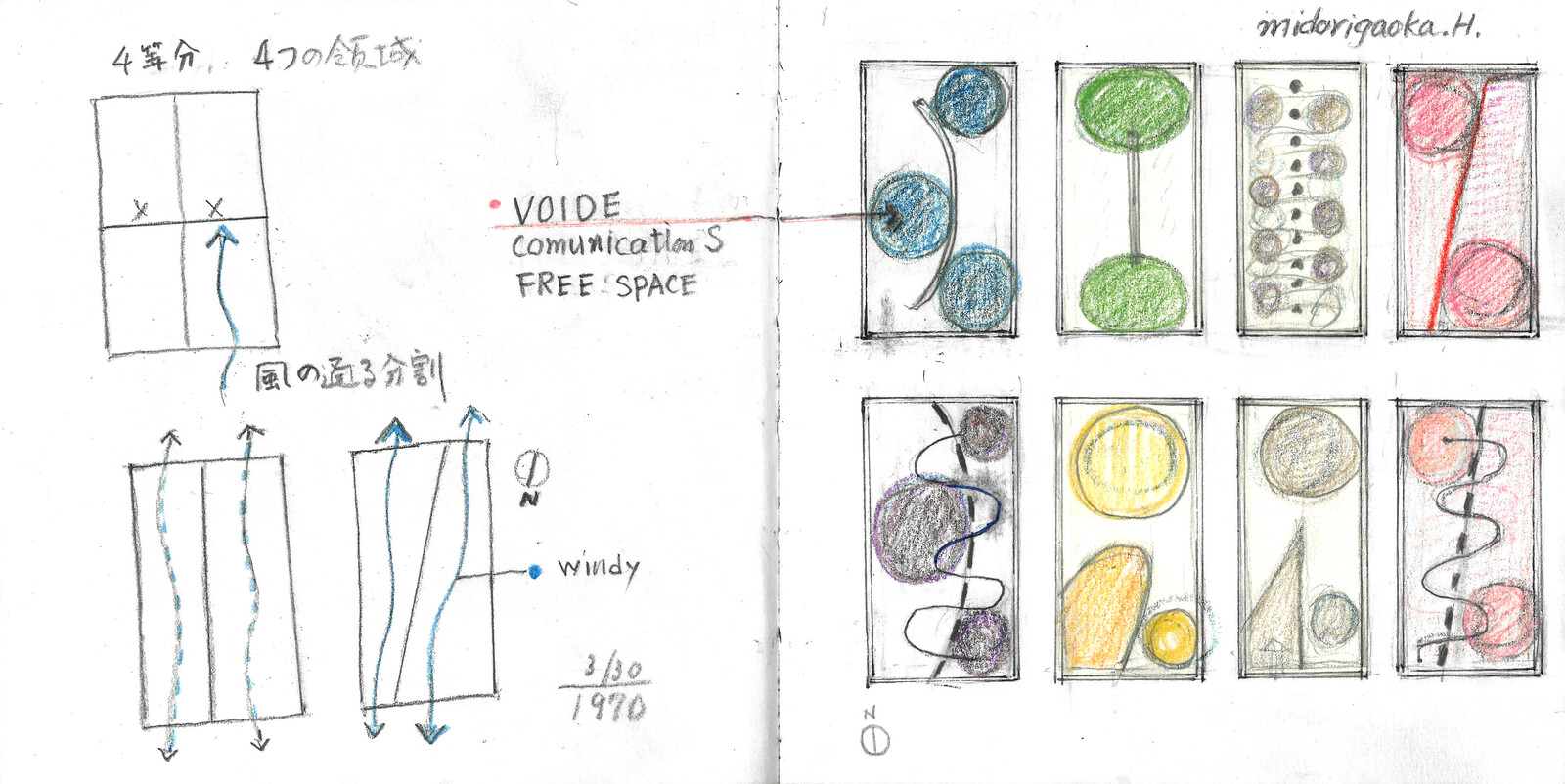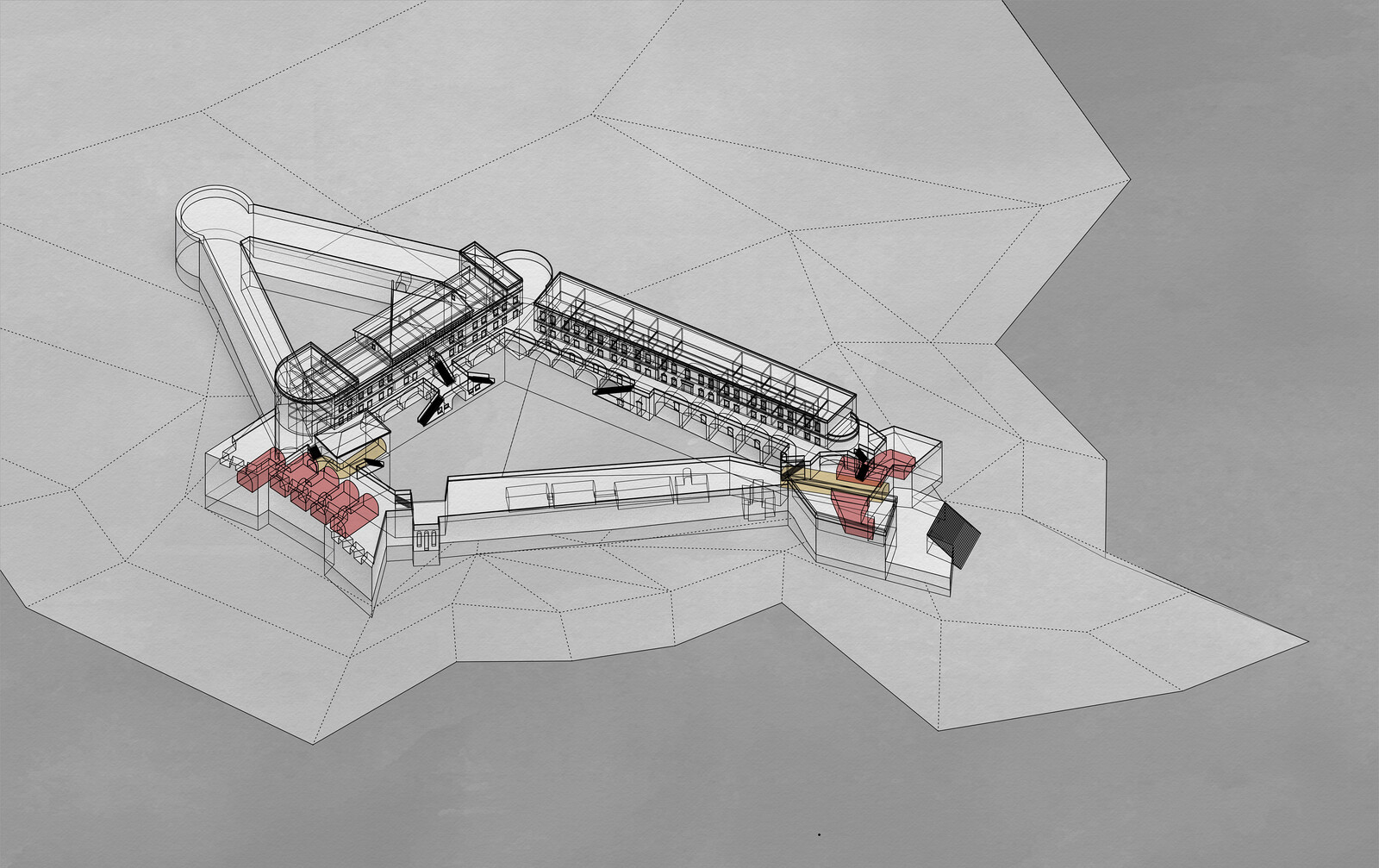Nathaniel Whitfield The university and the prison both exist as metaphors and metonyms. As part of the Underground Scholars Initiative and the UCLA Prison Education Program, we are entangled within both of them as concepts and institutions to varying degrees and intensities.1 I’ve been thinking about our relationship to, and within, the carceral logics of these institutions as we are embedded in their discursive, social, psychological, material, and embodied effects, and as these are embedded within us.
Alberto Lule I was incarcerated for about fourteen years, and needing to get back into education was probably the number one concern I had when I was released. I started at community college level and then transferred over to UCLA. As I spent time there as an art student, I started wondering why I felt so comfortable walking around the campus after doing fourteen years in prison. Just the fact that campus even had this title of “institution”… I grew up knowing that as the word for prison, as in correctional institutions, before I knew that was also a name for UCLA or any other institution of higher learning. I don’t think that is a coincidence. I grew up in the Santa Barbara area, which is not really known to be like the hood; it’s not really a marginalized or rundown neighborhood. I grew up in a working-class Chicano town called Goleta where there were a lot of police. The whole idea of being confined for me begins in our own neighborhoods. When I would go to the good parts of town, I would automatically be singled out; I would get pulled over or asked questions. If I was in an all-white neighborhood, and if I wasn’t there to trim hedges, they really wanted to know why I was there. They saw me as if I was out of bounds, or out of place. Even on campus I get certain looks, certain questions. On campus, I often get asked I work there. I’m a little bit older; I’m a non-traditional student. But the fact that I get aligned with somebody that works there is because a lot of the maintenance people there are Latino. Why do people just automatically assume that all the brown people are janitors? It’s almost like there are institutions built for people of color, and there are institutions built for white people. In society you’re placed into these categories. Their structures are invisible—they’re not outlined for you—but they confine you. In the place where I was physically confined—the prison—the majority of the people were either black or brown. One of the first things I noticed walking on a campus of higher learning, as compared to walking on the prison yard, was that there are similarities. There are guidelines, there are protocols. The environment controls you.
NW You mention that confinement works here on the level of identity, but the mechanisms of carcerality are still at play. Confinement has expanded from the site of the prison not just into geographical space beyond, but also as a psycho-social space. It also relates the idea of enclosure, and what Marx calls primitive accumulation, that moment of colonial encounter which is shot through with violence and domination. There seems to be a relation between the enclosure of common land, the enclosure of social relations, and the enclosure of knowledge within the university. All of these are structures of confinement in that sense, working in similar yet distinct ways.
Savannah Ramirez I think when we talk about land, it’s important to acknowledge that UCLA is built on stolen land.2 It belongs to the Tongva people. Alberto mentioned how our neighborhoods are hyper-policed. That’s not happening by mistake. At UCLA we have a center designed to research what we call “Million Dollar Hoods.”3 We’re spending more on incarceration than on education. If the state budget is supposed to reflect our values, then why, in the city of LA, does over 54% of its yearly budget go towards policing?4 At the same time, there’s been huge success recently with the passing of measure J, which reallocates an additional portion of LA County budget to community investments and alternatives to incarceration.
NW One of the tasks you seem to be posing is to map genealogies of power. Especially given how public agencies—such as education and healthcare—are increasingly absorbing policing functions, while many institutions of organized violence—such as the police and prisons—are simultaneously absorbing social functions. I’m also thinking of how the prison as a spatial-temporal organization extends beyond the prison as a site of confinement. Part of the work is to locate and think through what fixes subjects to such apparatuses of domination, of discipline, of control. Which is why I suppose, the idea of the university as a white space and the prison is an institution for controlling black and brown bodies that you spoke of Alberto feels like an important framing. One could then question what mechanisms of control the university exerts on bodies and what type of racialized subjectivity it constructs.
AL You can also think of other spaces as well. A lot of black and brown artists would end up in the cultural center rather than the white cube gallery. And a lot of the people making millions of dollars off artwork are not usually people of color. It’s kind of like why even have that space? Why not just create an all-encompassing art space? It all goes back to segregation and Jim Crow laws where you have colored bathrooms and you have white bathrooms. That kind of thing still exists, but has better camouflage; it’s not labeled like that. Those are all things that begin or began in otherness.
Rosie Rios I remember the first time I went to a prison, for one of my classes through the UCLA Prison Education Program. I went to the Barry J. Nidorf Juvenile Detention Facility, and I couldn’t believe how much it looked like my high school. It does something to you, when you can recognize your high school in a prison. There’s also the school to prison pipeline, where overpolicing and zero tolerance policies in underserved communities leads not to higher education, not to careers, but to prison. And then for the few of us that are able to end up in these spaces to not be treated with respect… It reminds me of how during the 2020 #blacklivesmatter uprisings in LA, UCLA offered the Jackie Robinson Stadium to the police. It was basically a prison or a jail; a place to keep people who were arrested, to detain them. And don’t even get me started on the University of California Police Department (UCPD) and how they continue to profile, harass, and arrest students who are accepted and are a part of the UCLA community.5
NW That reminds me of the protest banner placed beneath the “Champions are made here” sign that was unveiled during a protest at the Stadium which said “Prisoners Made Here.”6 This is unfortunately only one of many ways that the university aids and abets state violence, how they are structurally complicit in the creation of prisoners.
AL I’ve had those experiences growing up myself, but now I’m re-experiencing them again as a father of a fourteen-year-old who’s going to junior high. One day we dropped him off at school when they were calling on the PA system, and he was like “Oh, man, there goes that prison megaphone again.” I turned around was like: “What did you just say?” He said it’s like the ones they had when he would visit me. He also said that when he would go to detention they would call the dean of the school the warden because he treats them like they’re prisoners; he gives the students numbers, and they’re made to walk around so that all the kids in recess have to look at them. They’re being paraded, the same thing that happens to people when they go to court, when they come in shackled so that the public can tell who the people that are in trouble are. These are all little things, little performative details that add to the actual physical appearance of the school. Another time he got his headphones taken away because he had them on in class, and the teacher said he can have his headphones back at the end of the day. But then at the end of the day, she just left, so he grabbed his headphones off of her desk and left. The next day they accused him of stealing, of being a thief; that the headphones were school property. When we had our teacher-parent conversation I asked them why they were calling him that, those words, that terminology being used is installing things in him. He’s being labelled and treated as a criminal. When I would go to detention as a young kid, and then later on when I would be detained by police, I already knew the word. I knew that it meant I was going to be there for a little bit, and then they’re going to let me leave, hopefully.
NW I have never experienced anything like that, but you speaking of a body that is positioned within certain arrangements of time, space, and movement, within certain logics of domination which act upon it reminds me of Michel Foucault’s concept of the docile body in Discipline and Punish—which very specifically gestures to all of this. He describes exactly what you have already mentioned: the partitioning of time, the imposition of language, and so forth which constantly coerce the body, act, and exert power upon it. In this sense, power not only subjugates people but also constitutes subjects. In the process they build up a sense of self-knowledge; it constructs their identity from within and without. Confinement is a process; it is being confined to this identity which is imposed upon the self, but also comes from within the self.
AL It’s almost like they’re tailoring people so that when they finally get to the penitentiary they’ll automatically know: “I’ve always been here, this has always been me, this has always been who I am.” When I got out of those spaces and entered the space of higher education, I saw the same kind of system, only now it is not so much a system of discipline, but privilege. The same mechanisms were there, but they were working in reverse. They were there to administer privilege instead of administering discipline.
NW I wonder how this administration of privilege is linked to how the university creates a labor force, which neoliberalism necessitates must serve the state and the market; how privilege and whiteness is bound up with that and how universities mold subjects to operate within those parameters. The explicitness of this is present in how universities sell themselves with how successful students will be based on what kind of job they are going to get afterwards. Universities are literally ranked based on their ability to convert students into workers.
RR When I was an undergrad at UCLA I took a course called “Disrupting the School to Prison Pipeline” taught by Bryonn Bain and Pedro Noguera. It was the first UCLA class to go inside Barry J. Nidorf. During that class we did this workshop called “Dear Teacher,” where we reflected on how interactions at the elementary, middle, and high school levels impact the way you think about yourself and see your future. Working with incarcerated students, the prompt was to write a letter to someone in school—your teacher, counsellor, the school principal even. What would you tell them? A lot of people said things like “I wish you wouldn’t have told me that I couldn’t make it,” or, “I wish you would have been more understanding of what I was going through”; “I wish you knew what was happening at home and that’s why I was struggling and couldn’t concentrate.” We created an anthology with these letters, and our goal was to give it to people working in schools so that they could get a better understanding of their role and how much impact they have on students. When I was in high school, I remember my counselor telling me that I’ll be lucky if by my senior year I’m not pregnant. Those are just words, but they have an impact. I could have just internalized them, but continually being resilient to those things is not only stressful but it’s exhausting.
SR I’m reminded of the term “dropout,” and on the other end, “pushout.”7 Students often can’t advocate for themselves, because when they do they’re challenging someone who is supposed to have power in the classroom. Educators need understand the needs of their students as well as the needs of their communities, because school is only one part. There’s also what’s happening outside of the school.
RR People can have great intentions but if you don’t have a broader understanding of where the community you’re serving is, of what they’re going through, then you can end up causing more harm than good.
AL A lot of my artwork deals with the issues we’ve spoken about. When we did critiques in class, my work would be met with silence. It was a very bad reality check. I realized that my fellow students who haven’t walked in those shoes have no idea what I’m talking about. When they did speak it was more sympathetic than empathetic.
RR The importance of including voices of people who are directly impacted is not just because we should center their voices. We should. But it’s important because you never know how these kinds of projects could help incarcerated students as well.
AL I’m wondering where we see exactly this conversation can go?
RR Do we want to provide suggestions for anything? Just so it doesn’t seem like trauma porn.
SR It’s really important for us to highlight labor. Oftentimes, it’s students that have been directly impacted by these oppressive systems who are having these conversations and are willing to put in the work. And on top of being students in these spaces that aren’t built for us, we’re also organizers, uncompensated for our time. Then on the opposite end, someone else’s research looks at us as subjects, and they’re the ones who are benefiting, getting credited, getting compensated.
NW Michelle Brown talks about penal spectatorship, in which the technologies and mediums of research, of analyzing, of looking creates distance, which is violent because carceral logics themselves are bound up in this process of distancing. In this sense the university constitutes us as subjects of intellectual distancing.
RR It’s important to recognize that exposing and talking about what your lived experience is not an easy thing even though we’ve gone through many times I feel a responsibility for myself, my community, and my family to participate and continue to speak out against injustices and these oppressive systems. But at the same time, I feel like we need to provide more. We need to provide access and resources. This is why the work of the Prison Education Program is so important, in organizing their events and discussions where the control and moderation of the narrative is moved away from people who have never experienced these things to people who have. This, in my opinion, is an example of the abolition of the structures and systems where we are no longer just subjects, but the creators and analysts of our own marginalization.
Underground Scholars Initiative (USI) was first established at UC Berkeley in 2013 as a student organization. USI is completely student-run and exists at eight UC campuses. USI focuses on building a prison-to-school pipeline through recruitment, retention, and advocacy. See also UCLA Prison Education Program, ➝.
See Robert Lee et al., “Land-Grab Universities,” High Country News, 2020, ➝.
See Million Dollar Hoods, ➝.
David Zahniser, Adam Elmahrek, and Priya Krishnakumar, “Defund the LAPD? At this pace, it would take 20 years to hit Black Lives Matter’s goal,” Los Angeles Times, August 11, 2020, ➝.
For more details, see UCLA Cops Off Campus Abolition Map, ➝. This growing catalog that aims to pressure the UCLA campus to end its legacy of policing students and community. This map will reflect on a portion of the carceral actions of UCLA and continue to build towards a campus and a world without cops.
The protest was organized by campus based organisations Cops off Campus Coalition, No UCPD Coalition, Divest/Invest UCLA Faculty Collective alongside Black Lives Matter LA, LA CAN, Stop LAPD Spying Coalition, WP4BL, Ground Game LA, Ktown for All, NOlympics LA, People’s City Council, Anti-Eviction Mapping Project, Westside Local of the LA Tenants Union, and Justice LA.
See “Pushout,” School Discipline Support Initiative, 2020, ➝.
Confinement is a collaborative exhibition curated by gta exhibitions and e-flux Architecture, supported by the Adrian Weiss Stiftung and the ETH Zürich Foundation.






































